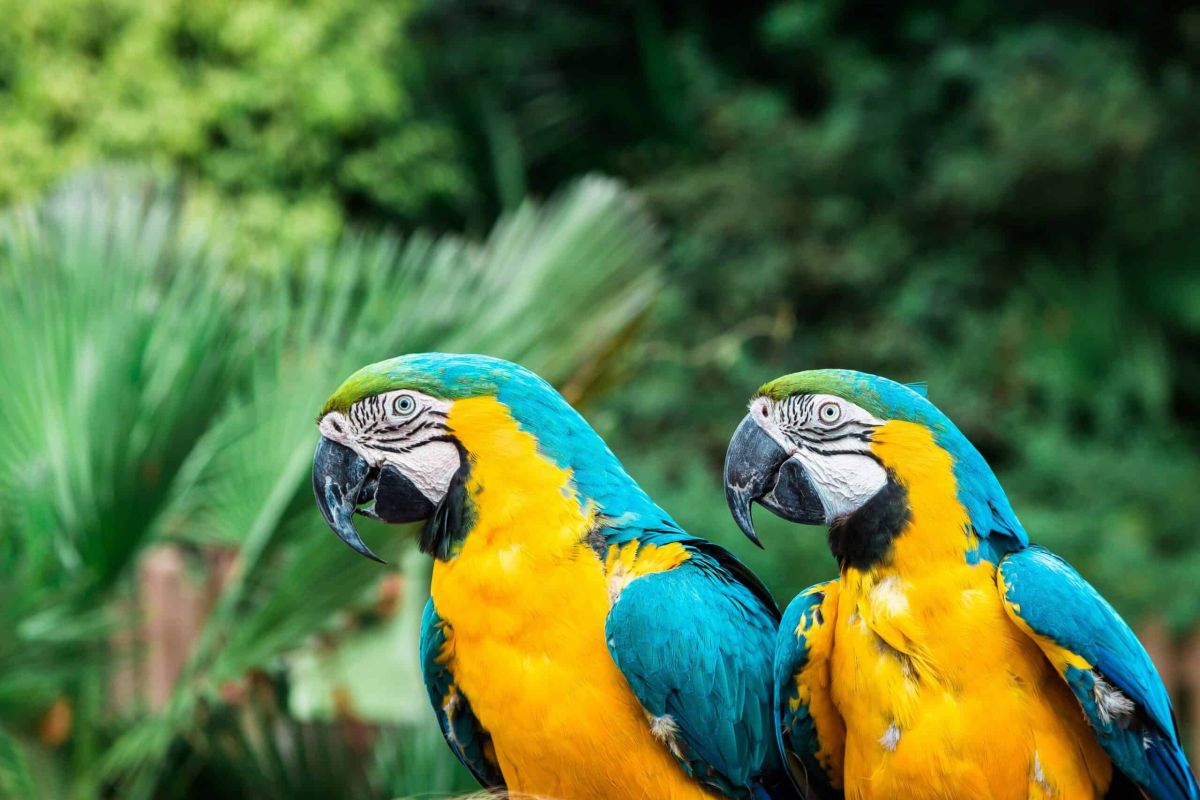Blue and Yellow Macaws: Nature’s Aviary Jewels

The world of avian wonders is rich and diverse, but few birds capture the imagination quite like the blue and yellow macaw (Ara ararauna). With their stunning plumage, intelligent behavior, and captivating personalities, these incredible parrots have become beloved both in the wild and as exotic pets.
A Stunning Display of Color
The blue and yellow macaw stands out with its brilliant plumage, which contrasts the vibrant yellow of its underbelly with the rich cobalt blue of its wings and back. Their long tail feathers add a dramatic flair and can even accentuate their size, making these birds look larger than life. Their faces feature a blend of white skin and dark beaks, framed by a unique arrangement of feathers that contributes to their overall charm.
Natural Habitat and Range
These magnificent macaws are native to the lush, tropical rainforests of South America. They can be found spanning a diverse range of habitats, including the rainforests of Brazil, Bolivia, Colombia, and Paraguay. Typically, blue and yellow macaws prefer areas with abundant trees and water sources, as these environments provide ample opportunities for foraging and nesting.
In the wild, they are often seen in pairs or small groups, flying gracefully through the forest canopy. Their powerful wings allow them to cover significant distances in search of food, and their keen eyes help them detect threats and navigate their surroundings.
Diet and Foraging Habits
Blue and yellow macaws are primarily herbivorous, with a diet consisting of fruits, nuts, seeds, and flowers. They exhibit remarkable dexterity, using their strong beaks to crack open hard-shelled nuts that many other animals cannot access. In the wild, they play an essential role in their ecosystem by helping to disperse seeds, promoting the growth of various plant species.
When kept as pets, it is crucial to replicate their natural diet as closely as possible. A balanced diet of pellets, fresh fruits, vegetables, and occasional nuts ensures these intelligent birds receive the nutrition they need to thrive.
Social Structure and Behavior
These macaws are known for their strong bonds, both with their partners and within their social groups. In the wild, they often engage in communal activities, such as grooming and vocalizing, which fosters their social connections. Blue and yellow macaws communicate through a wide range of vocalizations, from soft coos to loud squawks, each serving different purposes in their social interactions.
Their intelligence is notable—these birds can solve problems, use tools, and even mimic human speech. This intellectual capability makes them not only fascinating companions but also a responsibility for pet owners, who must provide mental stimulation and enrichment to keep them happy and healthy.
Conservation Status: A Call to Action
Though currently classified as “Least Concern” by the International Union for Conservation of Nature (IUCN), blue and yellow macaws face numerous threats, primarily due to habitat loss, deforestation, and illegal trapping for the pet trade. As their natural habitats are diminished, it becomes increasingly important for conservation efforts to focus on preserving their ecosystems.
Various organizations are working tirelessly to protect these stunning birds through habitat preservation, rehabilitation programs, and public education. Ethical breeding practices and responsible pet ownership are also essential in reducing the demand for wild-caught macaws.
Bringing One Home: Responsible Pet Ownership
For those considering welcoming a blue and yellow macaw into their home, it is importantl to understand the commitment involved. These birds can live for 50 years or more, requiring a lifelong dedication to their care. They need spacious cages, regular social interaction, mental stimulation, and a proper diet.
Potential owners should research thoroughly, and consider adopting from rescues or reputable breeders who prioritize ethical practices. By doing so, you not only ensure a happier life for the macaw but also contribute positively to the larger conversation about wildlife conservation.
Conclusion
The blue and yellow macaw embodies the beauty and complexity of nature’s creation. Their dazzling colors, intelligent behavior, and captivating personalities make them one of the most adored birds in the avian world. By appreciating these magnificent creatures and advocating for their conservation, we can ensure that future generations will witness the grace and splendor of blue and yellow macaws soaring through the skies of South America. Let us celebrate these vibrant avian jewels and commit to protecting their natural habitats for years to come.



